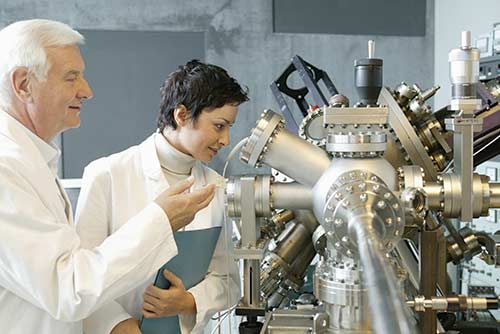The molecular beam epitaxy reaction chamber, which consists of a heating source and rotating mechanism, is also comprised of effusion cells located at the bottom of the chamber. These cells contain different elements (in ultra-pure solid form) that are used in the thin film synthesis; however, these cells also require their own heating source to ensure the cell reaches the appropriate temperature.
Beams of molecules in the form of physical vapor are then fired at the product from the effusion cells. This is controlled by opening and closing a shutter mechanism that covers each effusion cell. Once the molecules are fired, they build up on the product to create a thin layer of film. Here, the product is rotated to achieve uniformity, which results in a complex single crystal growth.
Once the crystal growth has been properly coated, it is heated and held at static setpoint. Because the product is fixed, albeit rotating, an infrared sensor is a non-contact solution that can help ensure the final product has been heated appropriately.





